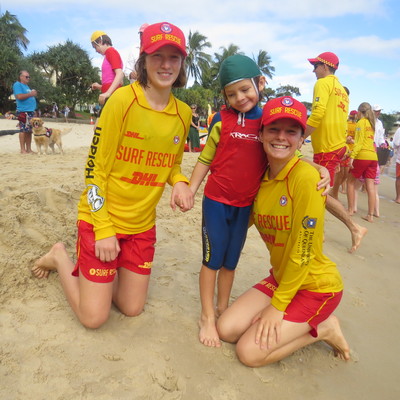Since the outbreak of Covid-19 many Australians are starting, for the first time, to really take notice of the work done by our essential service people, many of whom are volunteers.
Despite the flags now being down on our beaches, the facts remain that shortly, when our medical people deem it safe to once again raise them, it will again be up to our summer weekend volunteers to stand on the sand.
It is to be hoped that by then, their only concern will be for the safety of those who come to bathe between the flags: and not, that they may be the carriers of some other dangerous factor.
The stats for our last full summer season of patrolling our beaches, has once again highlighted the importance of our work; not only for our local communities but also one vital aspect of our nation’s future; the tourism industry.
In the state of Queensland, we can boast a total of 67 surf lifesaving clubs stretching from Port Douglas in the far north, to Rainbow Bay in the south. In our local region known as the Sunshine Coast Branch, which embraces clubs from Rainbow Beach to Redcliffe, we have a total of 14 clubs: in these clubs it is always our ambition to make the boast, no lives lost while lifesavers on patrol.
For our immediate beaches Noosa Heads, Sunshine and Peregian we have again achieved that goal. As stated in our last full summer (2018/19 before the virus) rescues were as follows: Noosa 51, Sunshine 9, Peregian3. In first aid cases Noosa 191 minor 39 major; Sunshine 44 minor 9 major. IRB rescues, Noosa 23 Peregian 2 and spinal injuries Noosa11, Sunshine 1.
With the high number of rescues in the Noosa area we must acknowledge the fact that their patrols not only cover Main Beach, but also respond to calls from Noosa West, Noosa Bar, North Shore and most important of all the National Park.
Regarding the Park we must remember that with its many rocky outcrops and unpatrolled beaches this is indeed extremely volatile area. The work now being done by Noosa IRB courtesy patrols and the 24 hour call out ERG teams is on the increase.
Because of its scenic beauty and animal (koala) life we encourage families to take the walk through the Park and enjoy: a major selling point for the Noosa tourist industry. However, on some occasions, in particular the hot days or that burning desire to take that great family photo from the waters’ edge, can result in a dangerous situation.
Regarding spinal injuries a lot of body surfers do not understand that a wave does not have to be big to be dangerous: a small wave can easily spear a surfer on to a sandbank; no worries. As we have said many times our good patrol people are not there just to perform rescues, but also to chat and advise: ten minutes in a discussion is better than a lifetime in a wheel chair.
With the Australian attitude of helping one and another now being stronger than ever, what could be a better time to really push beach safety than now: don’t be to embarrassed to ask questions. Remember our people are there to help.
SALUTE TO OUR LADIES
It is now 41 years since the cry went up loud and clear. Women in surf clubs… no way… never.
But now 40 years later, they have really made their mark: ladies such as Lorraine Buhk OAM and Life Member Alexandra Headland, (administration and public relations), Lenore Grice Life Member Surf Life Saving Australia, Maroochydore and Noosa SLSC (administration and coaching) and Johanna Redwood Life Member Sunshine Beach (patrols and coaching):also the ladies of the Noosa club who have now put years into that most worthy of causes, the Noosa Seahorse Nippers: a club dedicated to helping children in need.
Add to this we now have 14,811 female members in Queensland lifesaving serving at all levels, patrolling, administrating, coaching and competing.
Well done ladies, well done.








